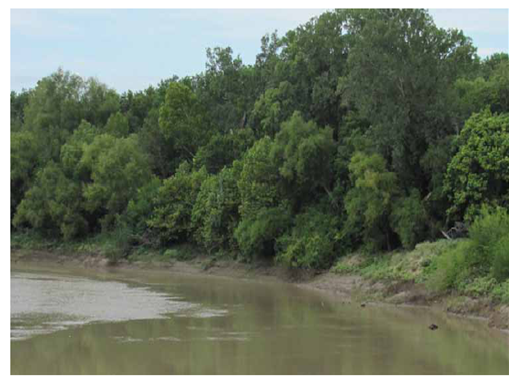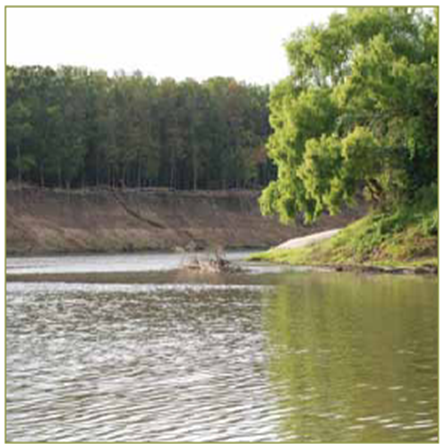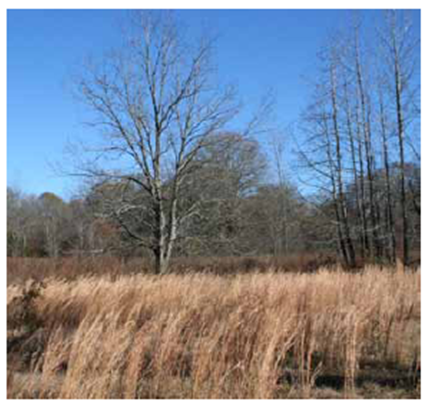Introduction
Aquatic habitats play a critical ecological role by supporting a rich biodiversity of plants and animals that live in them and the surrounding ecosystems. The intrinsic and monetary value associated with aquatic habitats makes them important resources in every society. For instance, they are sources of clean water and food. Furthermore most aquatic habitats normally support thousands of jobs in the tourism industry.
In this regard, they are used as cultural centers, and recreational facilities. Environmental and resource studies reveal that a significant number of aquatic habitats in the United States are likely to be lost in future. This is attributed to factors such as rapid increase in urbanization, high demand for water, overfishing and land use changes.
Nonetheless, most states have successfully implemented conservation measures to protect their aquatic resources. This paper sheds light on the geology, as well as, the types of habitats in the Trinity River. Furthermore, the management protocols of the river will be highlighted.
The Geology and Geography of the Trinity River
The Trinity River is one of the main water bodies in Texas. It flows from the northern part of Texas and covers approximately 710 miles. The river is made up of four tributaries which include the following. The West Fork begins in Archer County and flows towards the southeast part of Texas. It passes through Lake Bridgeport, Lake Worth and Eagle Mountain Lake.
The Clear Fork has its headwaters in Weatherford. It passes through Lake Weatherford and Benbrook Lake as it flows southeastward. The West and the Clear Fork merge in downtown Fort Wroth.
The Elm Fork begins in Gainesville and joins the West Fork in Dallas. The East Fork also joins the other three tributaries in Dallas, from which they form the Trinity River. The map of the river and its tributaries is shown in figure 1 in the appendix.
The hydrology of the Trinity is characterized by seasonal variations in the volume and flow of water. A significant decline in water volume normally occurs between August and October. However, little variation on daily flow is often observed during this season. The highest daily flows normally occur between January and June. This season is also characterized by the largest daily fluctuations in water volume.
Generally, the lowest stream discharge and flow variations can be observed from July to October. The largest daily fluctuations and flow rates can be observed from March to May. A sharp increase in water volume and flow rates normally causes floods in the Trinity basin. Furthermore, it leads to an increase in the river’s capacity to carry and transport sediments along its course.
The seasonal variations in the flow rates and water volume greatly affect the biodiversity of plants and animals living in the Trinity basin. Concisely, the variation affects the components of the habitats in the river. Additionally, it influences the nesting behavior of animals such as fish and the growth of plants.
For instance, when floods occur, the plants that grow along the river bank are likely to be destroyed. In contrast, these plants often wither when the river’s water volume reduces. Increased flow rates facilitate rapid transportation of nutrients which benefits the downstream plants and animal community.
Connectivity from the Trinity River to the adjacent oxbow lakes and wetlands greatly depends on the water volume and the flow rates. For instance, navigation and boat riding along the river is relatively easier and safer when the flow rates are stable. An increase in the river’s capacity to transport sediments causes an increase in fluvial processes such as bank erosion, transportation of water pollutants and weakening of channel stability.
Over the years, the hydrology of the Trinity River has significantly changed due to the construction of several dams and reservoirs. These structures usually trap sediments and reduce the flow rates. Consequently, little water flows downstream. However, the dams play a fundamental role in stabilizing the flow of water along the Trinity River. This has helped to reduce occurrences of flush floods along the basin.
Types of Habitats
The Trinity River basin consists of both man-made and natural habitats. The main habitats along the basin include the following. First, there are several lakes along the basin. These include Lake Bridgeport, Lake Worth, Lake Livingston, Eagle Mountain Lake, Lake Weatherford and Benbrook Lake. These lakes were formed after several dams and reservoirs were constructed along the Trinity River.
Thus, the lakes depend on the river and its tributaries for water supply. The lakes are home to thousands of different species of aquatic plants and animals. They also support the animals that live in the surrounding ecosystems by providing them with water and food. For instance, some species of birds such as vultures normally eat the fish from these lakes. Second, there are several floodplains along the river.
These plains consist of fertile land which supports the growth of indigenous trees and other plant species. Figure 2 shows part of the river’s floodplains and the plants that thrive in it. The Trinity River exhibits a low flow rate and little variability in water volume along the floodplains. This is attributed to the relatively flat topography of the plains which causes a lot of meandering in the river’s course.
The resulting reduction in flow rate ensures that the plant nutrients in the floodplains are not rapidly washed away. Additionally, the reduction in water volume fluctuation ensures that the plants have a stable supply of water throughout the year. The floodplains typically consist of plants that require a lot of water to survive. Such plants are hardly destroyed by sharp increases in water supply during floods.

Third, there are numerous forests and grasslands in the Trinity River basin. The grasslands cover approximately one percent of the basin and provide a suitable ecosystem for wildlife. Much of the grassland has hardly been destroyed by wildfires or human activities. Consequently, they have changed to shrub-fields and forests. Pine forests are also found along the Trinity River as it leaves Dallas.
Additionally, there are bottomland hardwood forests towards the southern part of the river. Figure 3 shows part of the bottomland forests in the Trinity River basin. These forests are not only habitats for various plant species, but also different animal and bird species. Empirical studies reveal that the acreage of forests along the Trinity basin has severely reduced in the last two decades.
The reduction is mainly attributed to human activities such as farming and residential developments which increase pressure on the limited land. Fourth, the Trinity River basin has a coastal plain that is made up of several oxbow lakes, sloughs, wide valleys, as well as, backwater tributaries. The lakes and tributaries found in this area host numerous fish species and aquatic plants.
Fifth, there is a delta region along the southeast part of the river. The delta consists of a wide valley and several streams which stem from the Trinity River. Finally, spawning habitats exists at various locations along the river. Most of these habitats are found between the Lewis Dam and the Dutch Creek. Spawning habitats are important since they provide a safe haven where fish and other aquatic animals can breed.

Biodiversity of Plants and Animals
The plants and animals that survive in the habitats found along the Trinity include the following. To begin with, numerous fish species are found in the Trinity River and the associated aquatic habitats. The most common fish species include alligator gars, blue catfish, longear sunfish, largemouth bass, white bass and silverband shiner.
Alligator gars are found in parts of the Trinity which are characterized by low flow rates and shallow waters. The floodplains are their preferred breeding grounds. Alligator gars are also found in the oxbow lakes in the Trinity River basin. The blue catfish are migratory and tend to prefer open waters with strong current. Adult blue catfish are found in the main river, whereas, the juveniles mainly live in the tributaries.
The reservoirs found along the Trinity also hold a large stock of blue catfish. Recent studies indicate that the stock of blue catfish has been declining in the Trinity River due to pollution (IRNR, 2012). Longear sunfish is one of the most abundant fish species in the river. They are mainly found in the northern part of the Trinity.
Largemouth bass are found in the tributaries, backwater areas, as well as, the oxbow lakes. Finally, silverband shiner occupies the upper and the lower parts of the Trinity. The distribution of fish in the river is shown in figure 5 in the appendix. Apart from fish, the river is also home to crocodiles, hippopotamus and turtles.
The main types of plants found in the river include various species of algae, papyrus, fungi and hyacinth. The plants and animals have symbiotic relationships in which the animals feed on the plants, while the plants obtain nutrients from the animal’s wastes.
The grasslands consist of both native and non-native grass species. Figure 4 shows the grass and tree species in the grasslands. Currently, native grass species are facing the risk of extinction due to their increased use in hay production. Shrubs, cactus and thorn trees are also found in the grasslands. Numerous species of reptiles can be found in the grasslands. These include snakes, tortoises, alligators, salamanders and lizards among others.
Cobras and pythons are the main snake species found in this area. The bottomland forests consist of both native and exotic tree species. These include honey oaks, hickories, honey locust and cedar elm among others (IRNR, 2012). Most of these tree species face extinction since the rate at which they are harvested exceeds the rate at which new ones are planted.
The animals found in the forests include waterbucks, gazelles, antelopes, monkeys and snakes. Several species of insects can also be found within the forests. Approximately, 750 species of birds live in the bottomland hardwood forests. The most common species include eagles, weaverbirds, sparrows and owls. The flora and fauna that exist along the Trinity River basin can only survive if their habitats are well managed.

Management Protocol
The responsibility of managing the Trinity River squarely lies with the Trinity River Authority (TRA). This organization was formed in 1955 to provide services that facilitate provision of clean water to the residents of the Trinity basin. Thus, the main objective of TRA is to improve access to clean water. The management responsibilities of TRA include the following.
First, TRA spearheads the formulation and implementation of development master plans for the Trinity basin (TRA, 2012). These plans incorporate the ideas and concerns of all stakeholders in the Trinity basin. TRA is also responsible for assessing the demand for water in the region and planning for the expansion of the existing water supply system.
Second, TRA is the sponsor of federal water projects at the county level (TRA, 2012). In this regard, TRA is the agent through which the federal government channels funds to finance water projects. TRA develops budgets to help in allocating the funds to various projects. Finally, TRA provides utility services such as wastewater treatment on behalf of the state government (Texas).
The measures taken by TRA to improve water quality help in conserving the Trinity River and the living organisms that depend on it. The Trinity River Adaptive Management Working Group (TAMWG) also participates in the management of the river. Unlike TRA, TAMWG focuses on the conservation of the Trinity’s wildlife species.
TAMWG facilitates the formulation of policies that help in conserving all wildlife species within the Trinity basin. In this regard, the group seeks policy and management advice from various stakeholders. It then reviews the advice and makes the final policy recommendations for wildlife conservation.
The residents of the Trinity basin are also expected to participate in the management process by restraining from any acts that interfere with water quality and survival of wildlife along the basin (TRIM, 2012). As stakeholders, the residents actively participate in the management of the basin by providing insights that inform conservation policies.
Ways of Improving Environmental Management
Effective management of the river will help in improving its water quality. This will lead to a reduction in parasites and incidences of diseases which threaten the survival of plants and animals in the river. Through sound management practices, the river’s floodplain capacity can be increased.
Consequently, it will be possible to avert the risks associated with floods such as destruction of animal and plant habitats, destruction of plants and animals and erosion of the river banks. Moreover, conserving the Trinity ecosystem will boost recreational businesses that depend on the river and its tributaries. In order to realize these benefits, the following measures can be taken.
To begin with, conserving the river’s water and the surrounding landscape requires a reduction of pollution. The agencies which are responsible for managing the river should actively participate in environmental conservation research projects. Through these projects, the agencies will be able to develop conservation measures that are commercially viable.
For example, discovery of cheap waste treatment procedures will significantly reduce the amount of raw sewerage that is being discharged into the Trinity. Once effective solutions have been developed, the agencies should collaborate with the local communities to implement the solutions.
This can be achieved through outreach programs which sensitize the citizens on the methods of reducing pollution (TRIM, 2012). Through close monitoring, it will be possible to detect cases of water contamination and destruction of the flora and fauna that depends on the Trinity. Consequently, it will be possible to take timely action to restore the ecosystem to the desired condition.
A legal framework should be put in place to facilitate implementation of the rules and regulations that govern the use of Trinity River. In this regard, effluent charges can be used to force polluters to internalize the damage costs of pollution. Since effluent charges are charged per unit of emission, they encourage firms to adopt technologies that reduce pollution. Transferable emission permits can also be used to promote conservation.
In this case, it will be in the interest of firms to reduce their emissions so that they can sell part of their pollution permits to less efficient firms. Finally, effective liability laws and property rights should be put in place. Property rights will promote good land stewardship among private land owners. Liability laws, on the other hand, will force polluters to pay monetary compensations to aggrieved parties.
Trinity River’s plant and animal resources can be conserved through the following policies. Harvesting of fish and trees can be controlled through taxes which increase the cost of harvesting. In situations where taxes can not be used effectively, a total allowable harvest should be set. Thus, anyone who exceeds the set limit will be prosecuted. Finally, only licensed firms should be allowed to harvest any resource from the river.
Conclusion
The Trinity River is one of the most important water sources and wildlife habitat in Huston. The river is characterized with several types of habitats which include lakes, reservoirs, coastal plains, delta, grasslands, forests and floodplains. These habitats are home to numerous species of plants and animals. Some of the animals found in the habitats include fish, snakes, birds, turtles, waterbucks and antelopes among others.
The plants found in the basin include different species of trees, algae, fungi and hyacinth. Most of these species face the risk of extinction due to factors such as land use changes, water pollution, rapid urbanization and overharvesting.
This risk can only be averted if the Trinity basin is properly managed. Some of the measures that can help in conserving the basin include reducing pollution, controlled harvesting of fish and establishing a legal framework that facilitates enforcement of the rules and regulations that govern the use of the Trinity River.
References
Campbell, H., Mcllgurm, A., & Tsamenyi, B. (1997). Fishery Management, Environmental Protection and Trade Liberalization. International Journal of Social Economics, 24(3), 128-138.
Ghosh, A. (2008). Environmental Conservation. New York: McGraw-Hill.
Guillen, G., Wrast, J., & Ramirez, D. (2009). Ecological Overlay for the Trinity River for Support of Development of Instream Environmental Flow Recommendations. Houston: Trinity Water Authority.
IRNR. (2012). Habitat Restoration in the Middle Trinity River Basin. Web.
Isamat, E., Romos, B., & Falgarona, J. (2011). The Conservation of the Agrobiodiversity of La Garrotxa Volcanic Zone National Park. International Journal of Environmental Quality Management, 22(2), 233-249.
Kumar, S. (2009). Environmental Protection. New York: Wiley and Sons.
Tisdell, C. (2005). Economics of Environmental Conservation. New York: McGraw-Hill.
TRA. (2012). Our Mission. Web.
TRIM. (2012). Measures for Water Conservation. Web.
Yen, S., Boxall, P., & Admowicz, W. (2000). An Econometric Analysis of Donations for Environmental Conservation in Canada. Journal of Agricultural and Resource Economics, 22(2), 40-45.